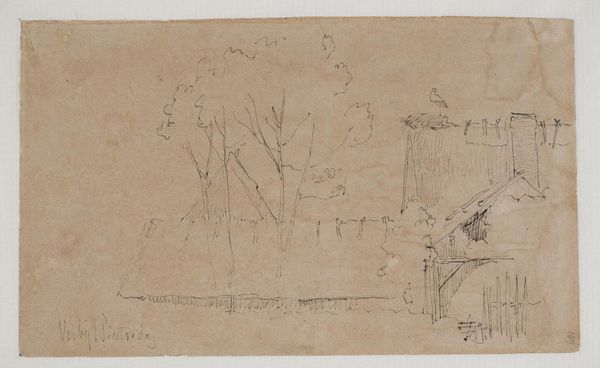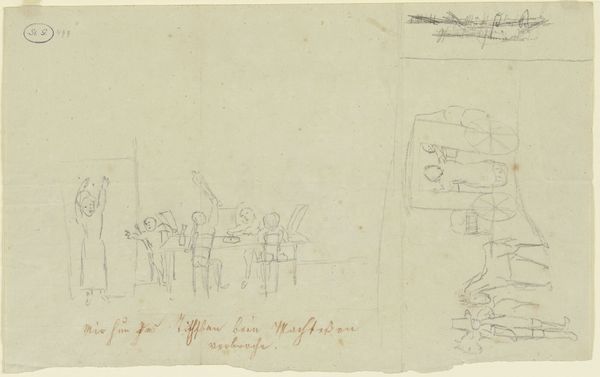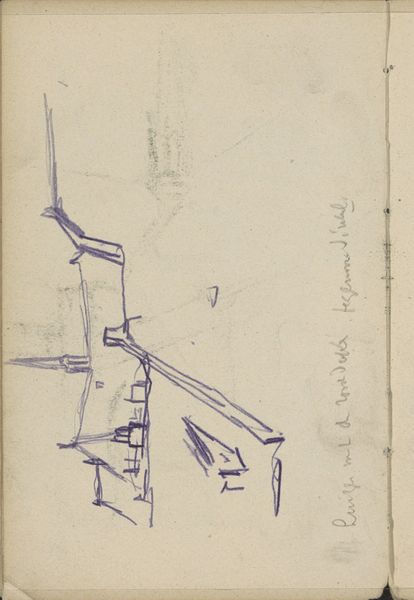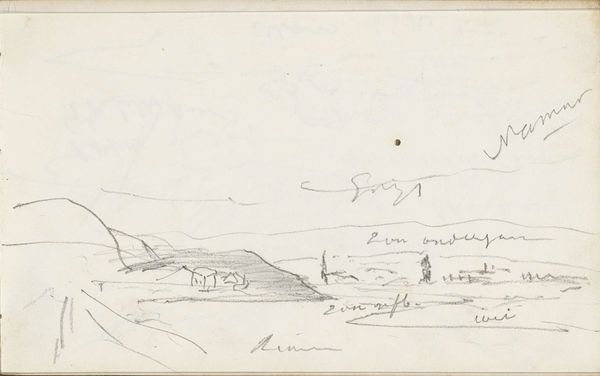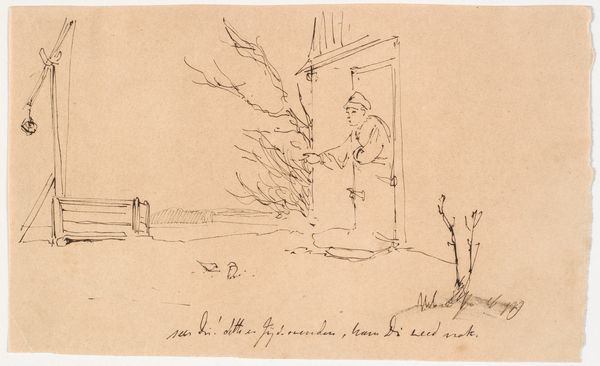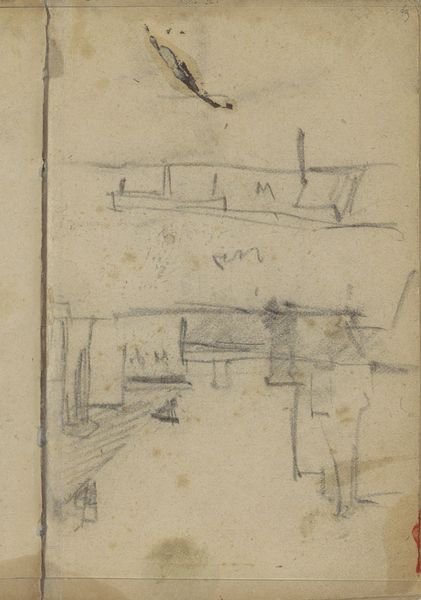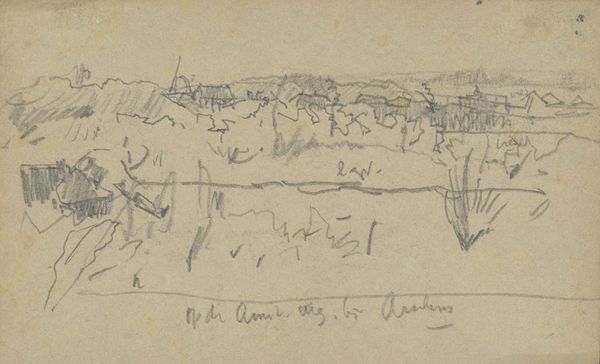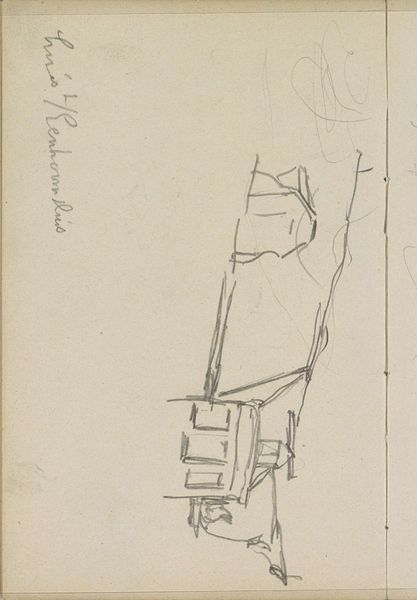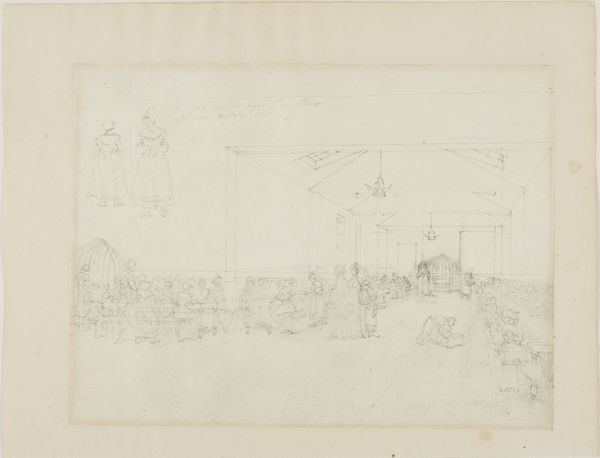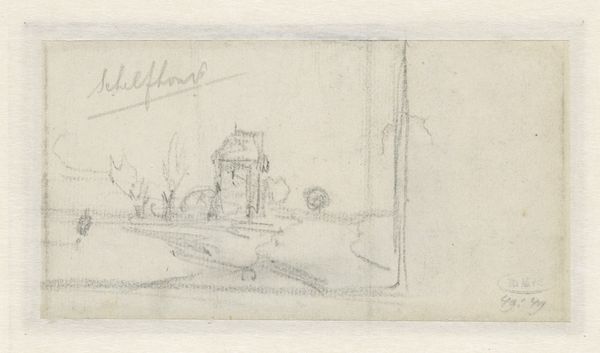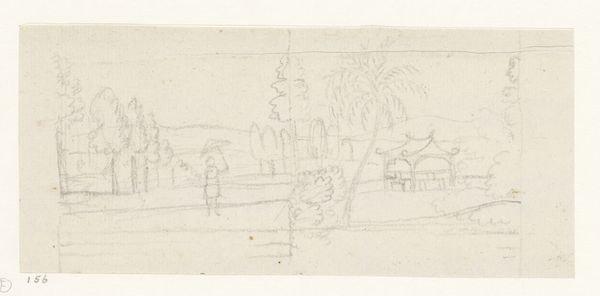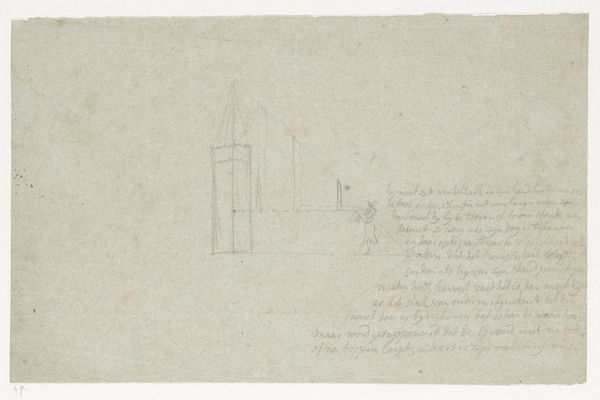
drawing, paper, pencil
#
drawing
#
paper
#
romanticism
#
pencil
#
cityscape
Dimensions: overall (approximate): 6.9 x 12.4 cm (2 11/16 x 4 7/8 in.)
Copyright: National Gallery of Art: CC0 1.0
Editor: This is Charles Meryon’s “Study for ‘Le Petit Pont’”, created around 1850 using pencil on paper. There’s something about the sketch-like quality that gives it a feeling of immediacy, like capturing a fleeting moment. What do you see in this piece? Curator: I see a glimpse into 19th-century Parisian society and labor. Look closely – Meryon isn't just drawing architecture. He’s hinting at the presence of working women, likely laundry workers. This small structure, noted as “Luteau de Blanchisseuse," would have served as a temporary shelter, but it speaks volumes about class and gender. How do you think this depiction relates to Romanticism, a style often associated with grandiose landscapes and historical narratives? Editor: That's interesting, I would never have focused on the women first! I suppose it challenges that Romantic ideal, bringing attention to the everyday reality, but still tinged with that focus on feeling? Curator: Precisely! Meryon subtly brings the margins to the centre. The casual sketch, the disposable structure, and the overlooked laborers. Consider how such imagery functions within a broader art world often celebrating powerful men and established institutions. Where does this "study" fit within larger systems of representation, and who gets to be seen – and how? Editor: So it is making a quiet but pointed social statement, pushing back against conventional subjects and perspectives through its very subject matter. Curator: Indeed. It asks us to consider not just what is depicted, but what is included, and what – or who – is typically left out of the artistic conversation. The artist’s notation emphasizes a working shelter on a small bridge – why this choice? How are labour and capital positioned within this small pencil work? Editor: That definitely makes me see the drawing differently, now realizing it is a look at the lives of working-class women. It seems that even an unassuming sketch can challenge traditional notions of what’s deemed worthy of representation. Curator: Exactly, art isn't neutral; it either perpetuates or disrupts existing power structures, consciously or unconsciously.
Comments
No comments
Be the first to comment and join the conversation on the ultimate creative platform.
